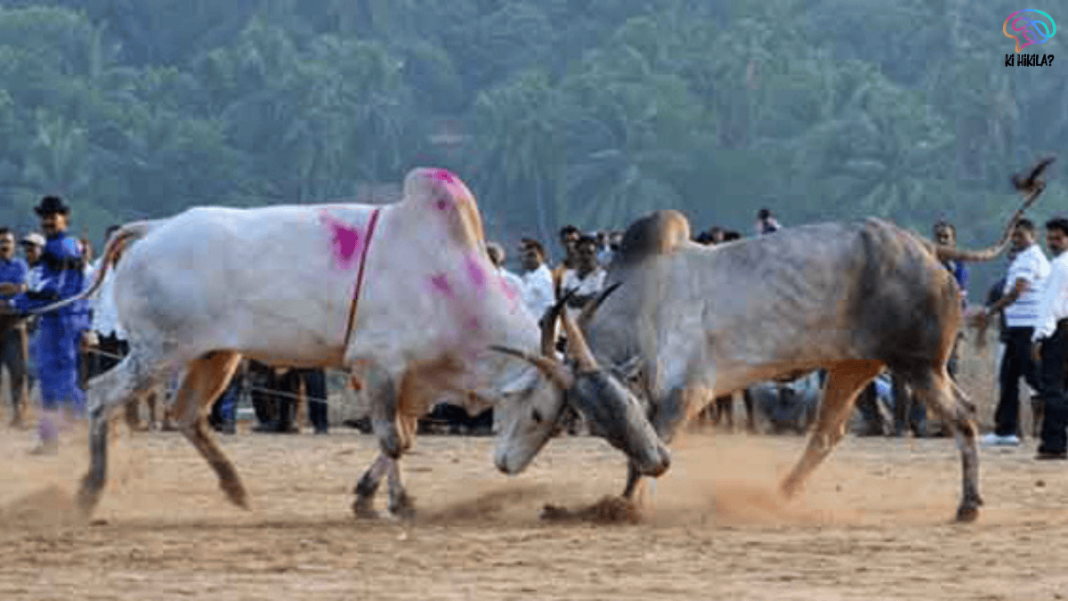Legalizing Bull Fighting in Goa has once again become a hot topic of debate after discussions in the Goa State Assembly. The traditional sport, locally called dhirio or dhiri, has long been part of Goan culture. However, it has been banned since 1996 under the Prevention of Cruelty to Animals Act, following a High Court order. Despite the ban, underground bull fights continue, reflecting both its cultural roots and ongoing controversy. While supporters argue for its cultural preservation and economic benefits, critics strongly oppose it on grounds of animal cruelty and public safety.
Historical and Cultural Context of Legalizing Bull Fighting in Goa
Bull fighting in Goa traces back to the Portuguese era and possibly even earlier. Traditionally held in post-harvest paddy fields or football grounds, it brought entire villages together. The fights were often part of church festivals, celebrated with music, food, and social gatherings. Unlike Spanish bullfighting, Goan bull fights do not involve killing the animal. Instead, the fight ends when one bull withdraws. This distinction is used by supporters to argue that the sport is less cruel and more of a contest of strength.
The sport holds symbolic importance in Goan villages, where bulls are treated with pride. Farmers rear them carefully, sometimes naming them after famous leaders or celebrities. During festivals, crowds of villagers and tourists would gather to cheer, making bull fighting an event woven into local identity. For many, legalizing bull fighting in Goa is seen as a way to protect cultural heritage.
Nature of the Sport

In dhirio, two bulls are brought face to face, and they charge at each other, locking horns. The contests can last just a few minutes or drag on for over an hour. The losing bull is the one that retreats. While promoters of the sport see it as harmless rivalry, the reality is that bulls often suffer serious injuries. On rare occasions, bulls or even spectators have died due to uncontrolled fights.
The animals are specially trained, fed rich diets, and exercised to enhance their strength. For many owners, their bull is a symbol of pride, similar to how athletes train for competitions. Fans even follow particular bulls, much like sports teams, giving them celebrity-like status in their communities.
Legal Status and Enforcement Challenges
The Goa High Court banned bull fights in 1996, declaring them unlawful under the Prevention of Cruelty to Animals Act. Despite this, fights continue secretly, particularly in villages along the coast. Organisers announce locations just hours before events, often through private WhatsApp groups or word of mouth, to escape police attention.
Enforcement has proven difficult. Several cases have been registered in recent years, but the local popularity of the sport makes strict action unpopular in some communities. For this reason, supporters argue that legalizing bull fighting in Goa would allow regulation, making it safer for both animals and humans.
Arguments for Legalizing Bull Fighting in Goa
Supporters highlight several reasons to push for legalisation:
- Cultural Preservation: They see dhirio as an integral part of Goan identity, comparable to folk dances or music.
- Tourism Potential: Legalisation could turn bull fighting into a tourist attraction, similar to traditional sports elsewhere.
- Economic Benefits: Farmers who rear fighting bulls could gain income through regulated competitions, betting systems, and tourism.
- Regulation for Safety: With legalisation, measures such as horn capping or veterinary supervision could minimise injuries.
Some politicians even propose building designated stadiums for the sport, claiming it would be safer and more transparent.
Opposition and Animal Welfare Concerns

On the other hand, animal rights groups remain firmly opposed. They argue that the fights are inherently cruel, causing injuries and psychological stress to the bulls. Unlike human boxing, where participants consent, animals are forced into combat.
Organisations like PETA India and People for Animals have raised concerns that legalising the sport would normalise cruelty and send the wrong message about animal welfare. They stress that promoting violent animal contests undermines efforts to build compassion in society.
Critics also point out that bull fights can escalate into dangerous events for humans, with past incidents of spectators being injured or killed. For them, no regulation can justify animal suffering.
The Way Forward
The debate over legalizing bull fighting in Goa highlights the tension between cultural traditions and modern ethical standards. On one side are those who view it as an expression of heritage and a potential economic opportunity. On the other are activists who stress the importance of animal rights and humane treatment.
If Goa chooses to legalise the sport, it will need strict frameworks ensuring safety, transparency, and welfare measures. Alternatively, the state could invest in promoting other cultural activities that showcase Goan identity without involving animal fights.
Ultimately, the future of bull fighting in Goa will depend on balancing cultural pride with compassion and modern legal standards.



